
By
Russ Green, NOAA Office of National Marine Sanctuaries
Madeline Roth, NOAA Office of National Marine Sanctuaries
One of the most exciting things about working for NOAA’s Office of National Marine Sanctuaries is finding creative ways to engage the public in the work we do. In fact, public engagement aimed at fostering an appreciation for sanctuary resources is one of the principal ways we manage national marine sanctuaries and promote conservation of the oceans and Great Lakes. Jacques Cousteau put it pretty simply when he said “people will protect what they love.” With this in mind, we incorporated outreach events into this ocean exploration project.
In Wisconsin, we partnered with University of Wisconsin Sea Grant and the Wisconsin Maritime Museum to tap into their educator networks and create a hands-on learning experience for 20 teachers. It was a great day, with researchers from around the country engaging educators from the Two Rivers/Manitowoc area, Milwaukee, and Green Bay. The teachers explored new avenues for bringing marine tech and archaeology into their classrooms. Equally important, we all got to know each other — an important first step in building sanctuary-educator partnerships that can create new opportunities for students.
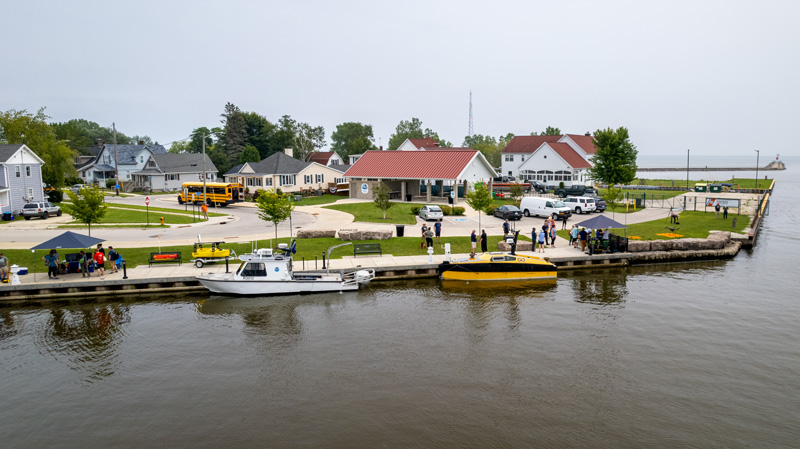
The research team sets up for a day of outreach in Two Rivers, Wisconsin. Image courtesy of John Cline, University of Miami. Download largest image (jpg, 7.8 MB).
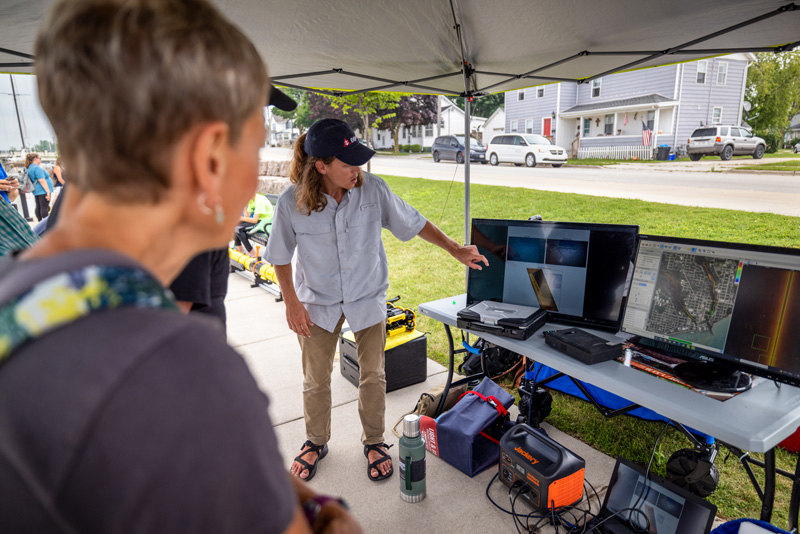
The team from University of Delaware explains how they are using sonar to map the marine sanctuary. Image courtesy of John Cline, University of Miami. Download largest image (jpg, 27.8 MB).
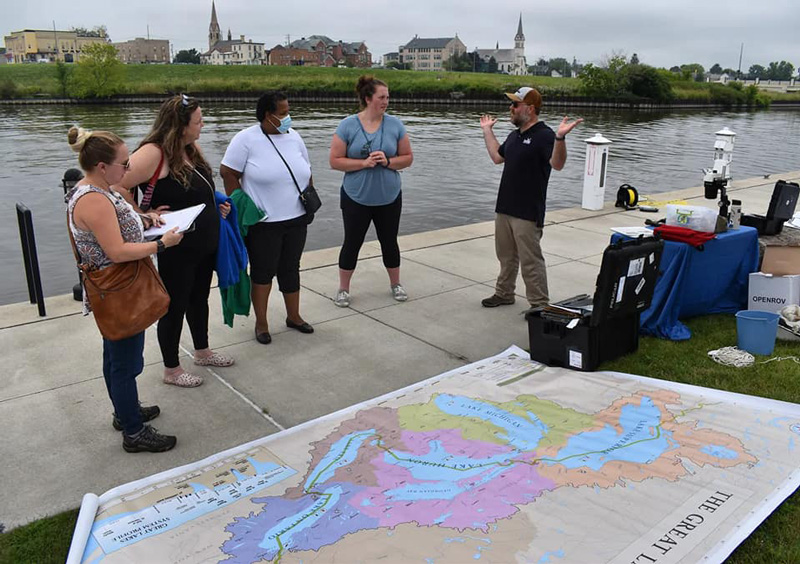
University of Wisconsin Sea Grant biologist Titus Seilheimer talks about Lake Michigan’s natural environment with a group of Wisconsin educators. Image courtesy of Wisconsin Maritime Museum. Download largest image (jpg, 87 KB).
In New York, we partnered with the Sacket’s Harbor Battlefield State Historic Site and set up right on the shores of Lake Ontario. Here, the general public, Sanctuary Advisory Council members, county officials, and local researchers could interact with the technologies, meet the research team, and learn more about the proposed Lake Ontario National Marine Sanctuary. The backdrop of this engagement — the historic battlefield — was the site of the 1813 Battle of Sackets Harbor. Technology demonstrations during the outreach event included an aerial magnetometer survey of the nearby Fort Kentucky and replica 32-pound cannon.
Partnering with the Sackets Harbor Battlefield State Historic Site presented an incredible opportunity to not only further the ongoing research related to the 1813 Battle of Sackets Harbor, but to support the incredible preservation efforts of the New York State Parks system. Developing these relationships with state agencies and their personnel is key to ensuring that national marine sanctuaries support local communities and our shared heritage resources.
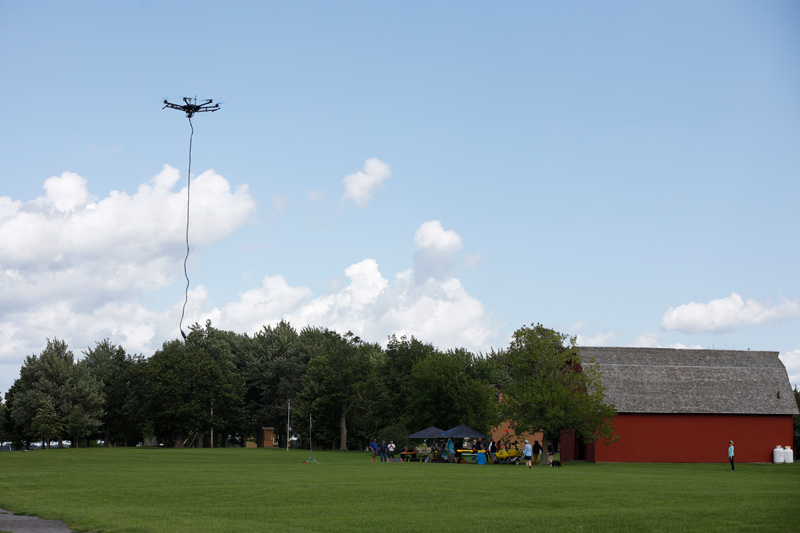
Researchers demonstrate the aerial drone at the Sackets Harbor State Historic Battlefield Site. Image courtesy of John Cline, University of Miami. Download largest image (jpg, 7.7 MB).
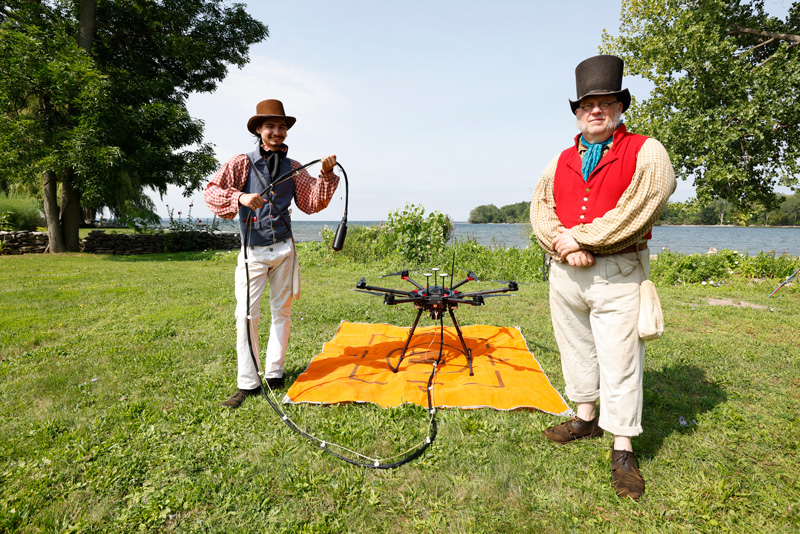
Reenactors at the Sackets Harbor State Historic Battlefield Site assist with drone deployment. Image courtesy of John Cline, University of Miami. Download largest image (jpg, 29.8 MB).
Published September 14, 2021